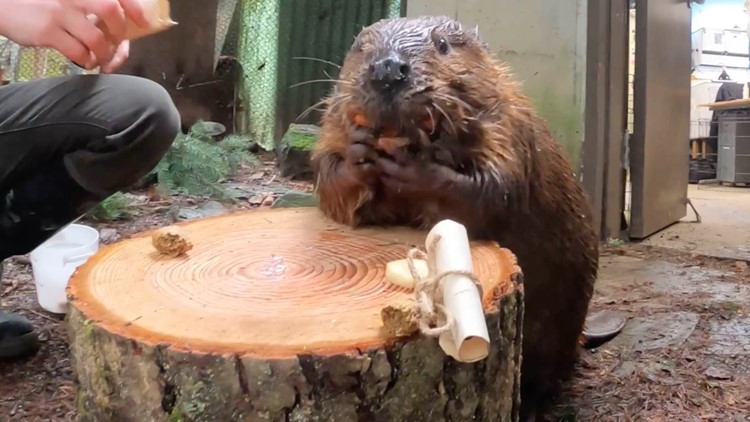PORTLAND, Ore. — While all eyes nationally are on Punxsutawney Phil and his annual Groundhog Day weather prediction, Oregon has its own local weather forecaster, Filbert the beaver, informally known as Stumptown Fil.
On Tuesday, Filbert predicted an early spring along with many of his competitors nationally. More than a dozen weather-predicting groundhogs (and one beaver) predicted an early spring, including Punxsutawney Phil. Only three warned of six more weeks of winter.
"We love groundhogs, but they aren’t native to the Pacific Northwest, and they don’t create wetlands," said Christina Parr, a keeper in the zoo’s North America section. "Here in Oregon, we’re beaver believers."
How accurate is Filbert?
Since Filbert's debut in 2020, his record hasn't been great in predicting the weather. Except for last year, when he predicted six more weeks of winter and later that month, Oregon had a huge snowstorm.
"He may not be a professional furcaster, but he’s right about half the time!" Parr said.
Who is Filbert?
Born at the Oregon Zoo in 2011, Filbert and his lodge-mate Maple have acquired thousands of fans through the zoo's social media channels. Their industrious wood-gathering activities earned Filbert and Maple the title "branch managers." Currently, the beavers are starring in the the "Beaver Branch Challenge" web series, where wildlife experts challenge them to chew down huge branches.
While Oregon is known for its beaver population today, that hasn't always been the case. American beavers were hunted and trapped for their fur in the 19th century, causing most of the population to be gone from their original habitats.
In the past 100 years, the population has been able to rebound due to conservation efforts and hunting regulations. Now, beavers are listed as a species of least concern by the International Union of Conservation of Nature.



